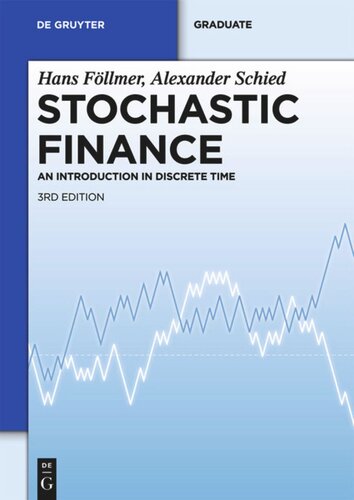

Most ebook files are in PDF format, so you can easily read them using various software such as Foxit Reader or directly on the Google Chrome browser.
Some ebook files are released by publishers in other formats such as .awz, .mobi, .epub, .fb2, etc. You may need to install specific software to read these formats on mobile/PC, such as Calibre.
Please read the tutorial at this link: https://ebookbell.com/faq
We offer FREE conversion to the popular formats you request; however, this may take some time. Therefore, right after payment, please email us, and we will try to provide the service as quickly as possible.
For some exceptional file formats or broken links (if any), please refrain from opening any disputes. Instead, email us first, and we will try to assist within a maximum of 6 hours.
EbookBell Team

4.4
52 reviews This book is an introduction to financial mathematics. It is intended for graduate students in mathematics and for researchers working in academia and industry. The focus on stochastic models in discrete time has two immediate benefits. First, the probabilistic machinery is simpler, and one can discuss right away some of the key problems in the theory of pricing and hedging of financial derivatives. Second, the paradigm of a complete financial market, where all derivatives admit a perfect hedge, becomes the exception rather than the rule. Thus, the need to confront the intrinsic risks arising from market incomleteness appears at a very early stage. The first part of the book contains a study of a simple one-period model, which also serves as a building block for later developments. Topics include the characterization of arbitrage-free markets, preferences on asset profiles, an introduction to equilibrium analysis, and monetary measures of financial risk. In the second part, the idea of dynamic hedging of contingent claims is developed in a multiperiod framework. Topics include martingale measures, pricing formulas for derivatives, American options, superhedging, and hedging strategies with minimal shortfall risk. This third revised and extended edition now contains more than one hundred exercises. It also includes new material on risk measures and the related issue of model uncertainty, in particular a new chapter on dynamic risk measures and new sections on robust utility maximization and on efficient hedging with convex risk measures.